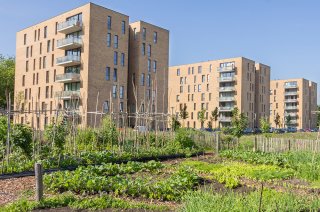
Dossier
Urban agriculture
In 2050, the world population will grow to 10 billion people. More than half of the population already lives in the city and this is only expected to increase. This increases the pressure on land and space, increases the need for livable structures and increases the demand for locally produced food. Urban agriculture is a solution to achieve a sustainable and liveable city and possibly reduce the urban footprint.
What is urban agriculture (urban farming)?
Urban agriculture (or urban farming) is the production of food in and around the city. This can vary from balcony or roof gardens in the city center to allotments and professional urban food production and food processing on the outskirts of the city. Each form of urban agriculture deserves its own place in the city and can contribute to a sustainable and liveable city and possibly reduce the urban footprint.
What are the benefits of urban agriculture?
More than half of the world's population lives in cities. This increases the pressure on land and space, increases the need for livable structures and increases the demand for locally produced food. City and countryside are becoming increasingly intertwined. Wageningen University & Research sees opportunities for new forms of agriculture with a natural place in and around the city. Beyond the function of food production, urban farming can link local food and energy production in the city to social goals, such as relaxation, care or educational opportunities.
The Wageningen approach for urban agriculture
- Designing and researching new concepts for urban land use
- Developing concepts into tangible initiatives with stakeholders
- Connecting communities, public organisations and business owners
- Creating space for urban agriculture in spatial planning and legal structures
- Evaluating, learning and advise policy makers and business partners






